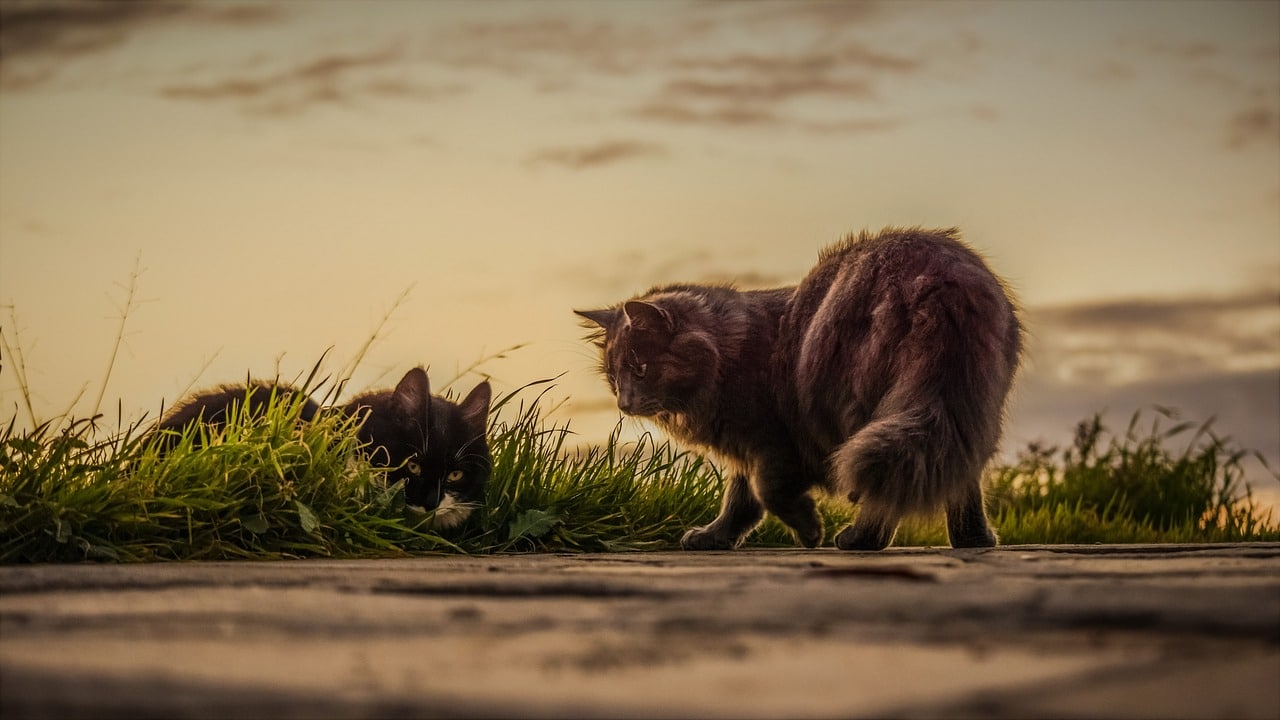How to Recognize and Address Separation Anxiety in Indoor Cats?

Do you have a cuddly little kitty that just can’t seem to bear the time alone? If so, your furry friend may suffer from separation anxiety. It may seem surprising, but cats can indeed feel anxious when left alone, just like humans. Recognizing the signs of this condition is crucial to helping your kitty feel comfortable and safe, even when you aren’t there.
Recognizing the Signs of Separation Anxiety in Cats
The first step in addressing separation anxiety in your cat is recognizing the symptoms. Understanding what to look for will help you identify your pet’s emotional state and determine if they need help managing their feelings of anxiety. But what exactly are these signs? Let’s delve into understanding the behavior of your pet.
En parallèle : How Can You Introduce a Rescue Cat to a Multi-Pet Household Without Conflict?
Excessive Grooming: Some cats may exhibit excessive grooming or licking behaviors as a coping mechanism for their anxiety. This can go to the extent of creating bald patches or skin sores.
Litter Box Issues: You may also find that your cat has started having accidents outside their litter box when left alone. This behavior is often their way of expressing discomfort or stress.
En parallèle : Natural diet for pets
Excessive Vocalization: Cats with separation anxiety may become very vocal when left alone, meowing, yowling, or crying excessively.
Appetite Changes: Cats with separation anxiety might not eat properly when you are not around. In severe cases, they may stop eating entirely until you return.
Pacing or Restlessness: Like humans, anxious cats may exhibit signs of restlessness or pacing. You might notice this behavior as you prepare to leave the house – a clear sign your cat associates your departure with feeling anxious.
Understanding Your Cat’s Anxiety
Understanding why your cat is exhibiting these signs of anxiety is just as important as recognizing them. Cats, like us, are creatures of habit. They thrive on routine and predictability. So, when their routine changes (like when you leave for work or go on vacation), they can feel stressed and anxious.
Cats also form strong bonds with their owners and can feel a sense of abandonment or loss when separated from them. This feeling is heightened in indoor cats as they have fewer distractions and less space to explore than their outdoor counterparts.
Also, cats are very sensitive to their environments. Even small changes can induce stress in them. So, a change in their environment, such as a move to a new home, might trigger anxiety.
Helping Your Anxious Cat
Now that you’re familiar with the signs of separation anxiety and why it occurs, let’s look at how you can help your cat. There are several steps you can take to improve their symptoms and overall well-being.
Keeping a Routine: As we mentioned earlier, cats thrive on routine. Try to keep your departures and arrivals as consistent as possible.
Independent Play: Encourage independent play to keep your cat entertained while you’re away. Use puzzle toys or automatic laser toys that will keep your pet occupied.
Comforting Scents: Diffusing cat-friendly essential oils or using pheromone spray can create a calming environment for your pet.
Hiding Spots: Make sure your cat has plenty of safe spaces in the house where they can retreat and relax. Cozy hideaways like a covered cat bed or a high perch can provide the solitude your cat needs to feel secure.
Remember, while these measures can help, it’s always best to consult with a vet if you suspect your cat has separation anxiety.
When to Seek Professional Help
If you’ve tried everything but your cat’s anxious behavior persists, it may be time to seek professional help. A professional can help diagnose if your cat is indeed suffering from separation anxiety or if there might be an underlying medical issue causing these behaviors.
A vet might recommend behavior modification techniques or even medication to help manage your cat’s anxiety. They might also suggest consulting a cat behaviorist who can provide insight into why your pet is feeling anxious and offer strategies to help them cope.
While it’s heartbreaking to see your pet in distress, remember, with patience and professional help, you can help your cat manage their separation anxiety. It might take some time, but your efforts will be worth it when you see your kitty feeling confident and secure, even when you’re not around.
Implementing Behavior Modification Techniques
One of the most effective ways to help cats with separation anxiety is through behavior modification techniques. These techniques work by changing the association your cat has with your departure to a more positive one. It’s important to remember that this process may take some time and patience, so it’s crucial to stay consistent and committed.
One common and effective modification technique is Counter-conditioning, where you associate your departure with something positive. For example, you could feed your cat its favorite treat or meal just before you leave. This way, your cat will begin to associate your leaving with the positive experience of eating something enjoyable.
Another technique is Desensitization. This involves gradually exposing your cat to the source of its anxiety in a controlled way. For instance, you could start by leaving your home for short periods and gradually increase the duration over time. This will allow your cat to get used to your absence gradually and decrease its separation anxiety.
Lastly, Redirected Behavior can also be beneficial. This involves distracting your cat during times when they might exhibit separation anxiety signs. You could use interactive toys or puzzles that require your cat’s attention and keep them engaged while you’re away.
The Role of Medication in Treating Cat Separation Anxiety
In some cases of severe separation anxiety in cats, behavior modification techniques alone may not be enough. If your cat continues to show signs of distress despite your best efforts, your vet may recommend medication as part of a comprehensive treatment plan.
Anxiety medication for cats works by calming your cat and reducing its stress levels. Depending on your cat’s specific needs, the vet may prescribe short-term medication to use during particularly stressful times, or longer-term medication if your cat’s separation anxiety is persistent.
Commonly used medications include selective serotonin reuptake inhibitors (SSRIs) or benzodiazepines. SSRIs, like fluoxetine, can help to regulate your cat’s mood, while benzodiazepines, like alprazolam, can act quickly to reduce extreme anxiety and panic.
It’s important to note that medication should not be viewed as a quick fix or the only solution. It should be used in conjunction with behavior modification techniques and under the careful guidance of your vet.
Conclusion
In conclusion, separation anxiety in cats is a complex issue that requires patience and understanding. Recognizing the signs such as excessive grooming, inappropriate litter box use, excessive vocalization, appetite changes, and restlessness can help you identify if your cat is suffering from this condition.
Understanding your cat’s behavior and implementing behavior modification techniques can often alleviate their anxiety. Encouraging independent play, maintaining a routine, creating calming environments, and providing safe spaces can help your cat feel secure when you’re not around.
In more severe cases, medication may be recommended by a vet. However, it is essential to remember that medication should be used alongside behavior modification techniques and not as a standalone treatment.
Remember, you’re not alone in this. Reach out to professionals such as vets and cat behaviorists if you need additional help. With time and dedication, you can help your beloved feline friend live a happier, less anxious life.
